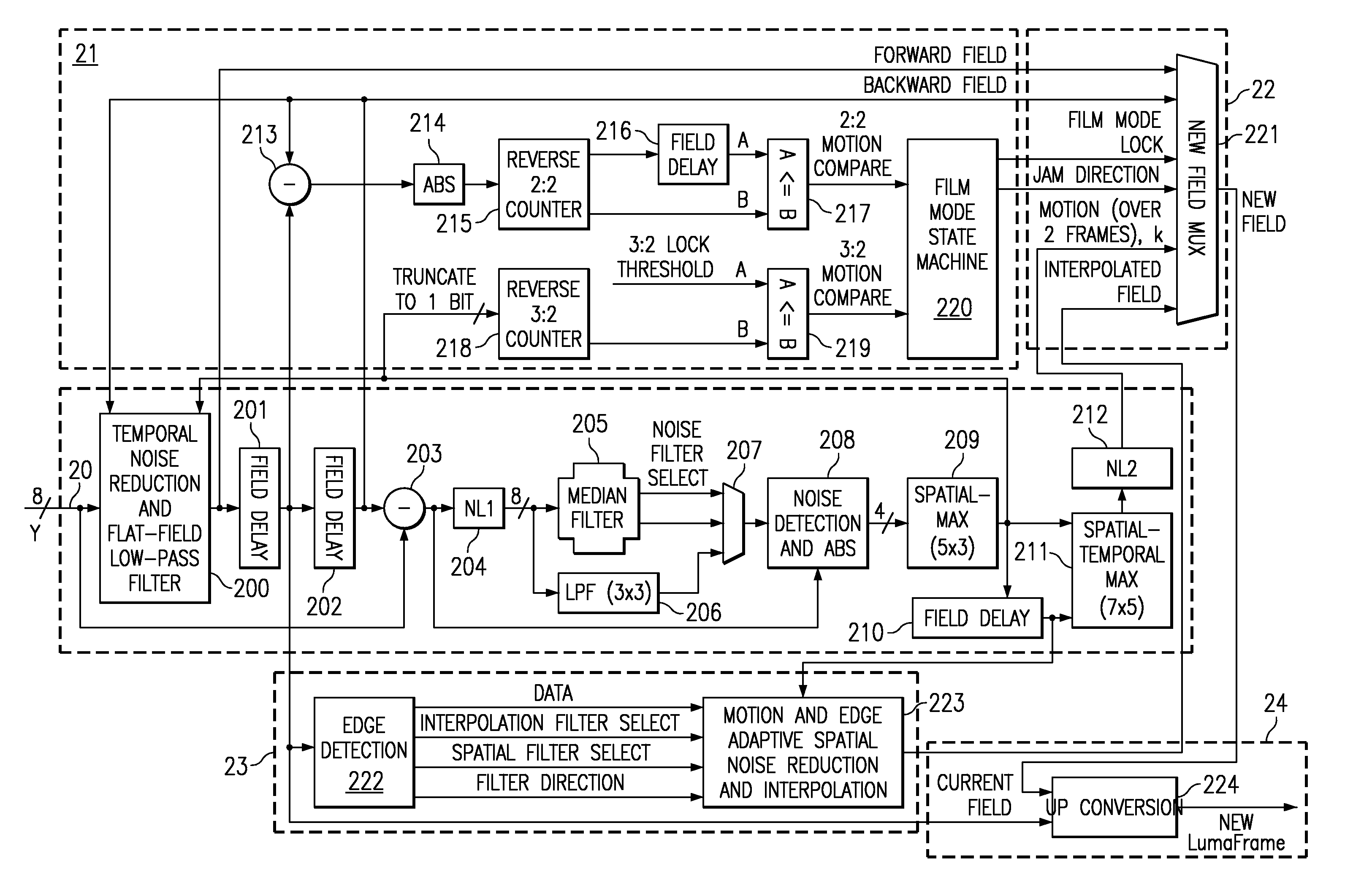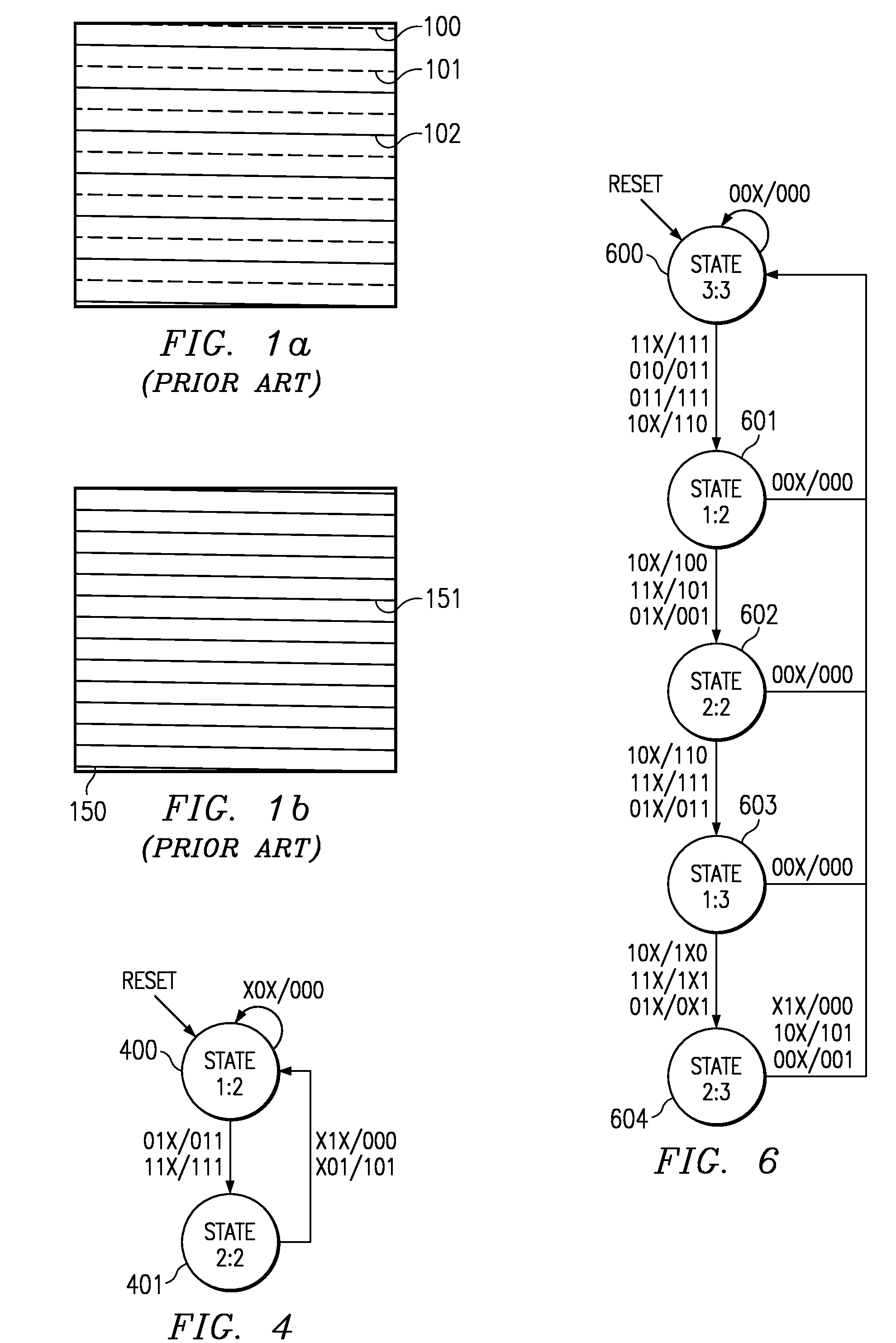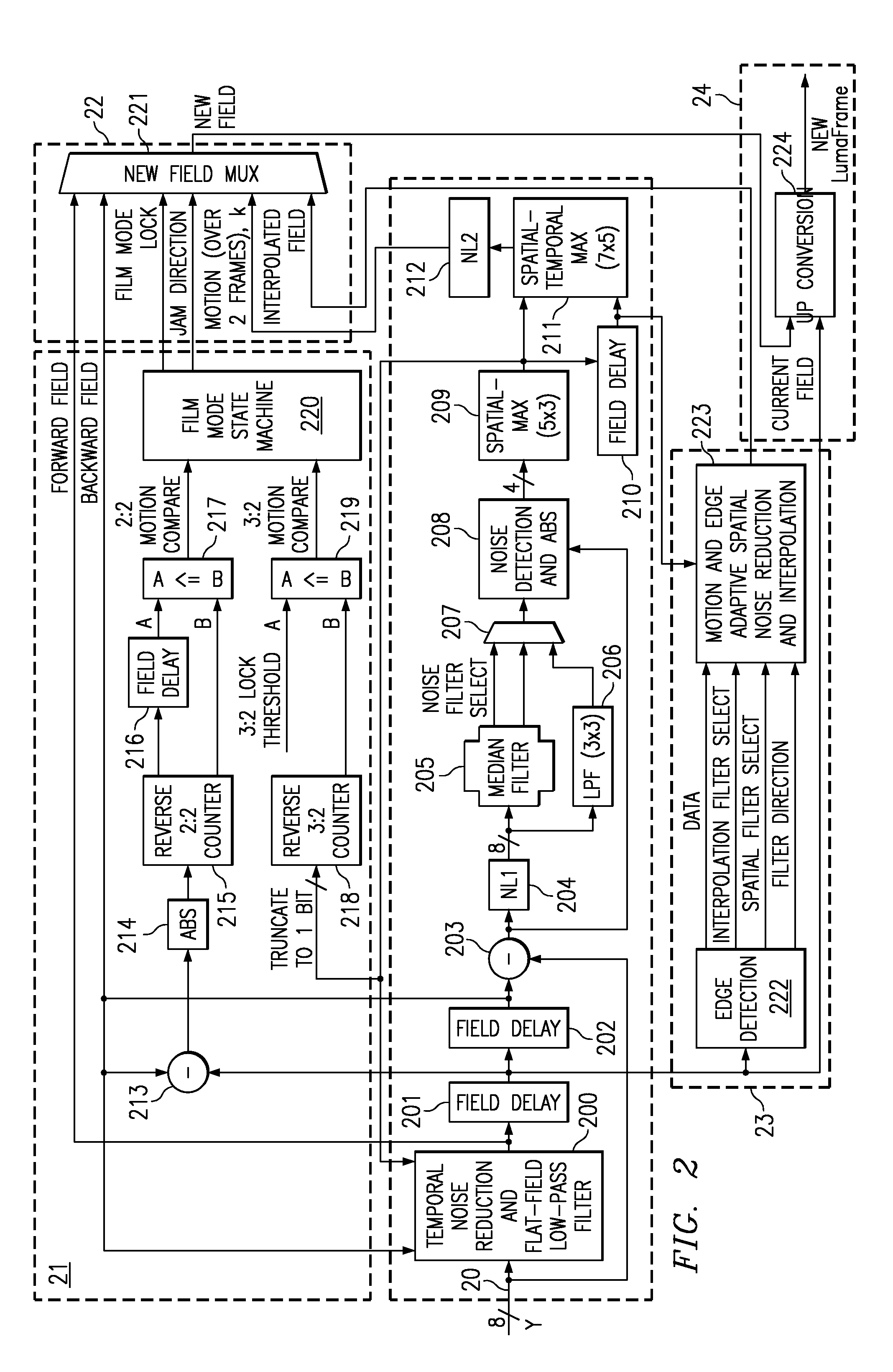Content-Dependent Scan Rate Converter with Adaptive Noise Reduction
a conversion rate and scan rate technology, applied in the field of scan rate conversion, can solve the problems of blurring the high spatial detail of the image, the inability to use information from the previous interlaced field, and the noise on the video to be considered, so as to achieve high integration, adaptive noise reduction, and high efficiency of implementation
- Summary
- Abstract
- Description
- Claims
- Application Information
AI Technical Summary
Benefits of technology
Problems solved by technology
Method used
Image
Examples
Embodiment Construction
[0040]The content-dependent scan rate converter with adaptive noise reduction of the present invention identifies and uses redundant information (motion values and edge directions) to perform the tasks of film-mode detection, motion-adaptive scan rate conversion, and content-dependent video noise reduction.
[0041]If the interlaced image sequence is created from a progressive source, such as film, then the progressive frame is created by jamming the appropriate adjacent fields together. Both 3:2 (60 Hz) film mode detection (NTSC) and 2:2 (50 Hz) film mode detection (PAL) are addressed in the method of the present invention. Additionally, when the film source is lost, the method smoothly switches from film mode (field jam) to motion-adaptive scan rate conversion.
[0042]However, when the original source is an inherently interlaced signal, then the motion-adaptive scan rate converter must determine how best to combine information from the current interlaced field and the previous interlac...
PUM
 Login to View More
Login to View More Abstract
Description
Claims
Application Information
 Login to View More
Login to View More - R&D
- Intellectual Property
- Life Sciences
- Materials
- Tech Scout
- Unparalleled Data Quality
- Higher Quality Content
- 60% Fewer Hallucinations
Browse by: Latest US Patents, China's latest patents, Technical Efficacy Thesaurus, Application Domain, Technology Topic, Popular Technical Reports.
© 2025 PatSnap. All rights reserved.Legal|Privacy policy|Modern Slavery Act Transparency Statement|Sitemap|About US| Contact US: help@patsnap.com



